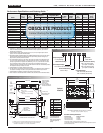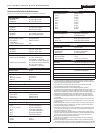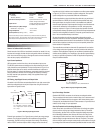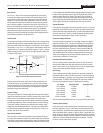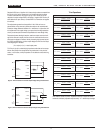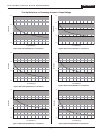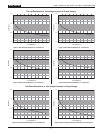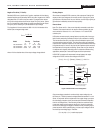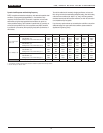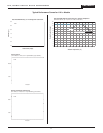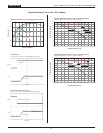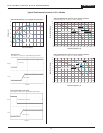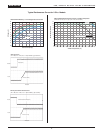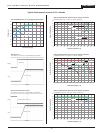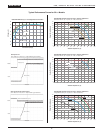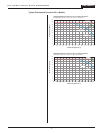
USQ Series
Load Conditions ➀ Performance Specifications 1.2VOUT 1.5VOUT 1.8VOUT 2.5VOUT 3.3VOUT 5VOUT 12 to 24VOUT
Load Step = 50 to 75% of IOUT Max.:
Peak Deviation, typ. 115mV 110mV 125mV 100mV 170mV 125mV 100mV
Settling Time to ±1% of Final Value, max.
➁ 200µs 200µs 225µs 200µs 100µs 100µs 100µs
COUT = 10µF || 1µF
Load Step = 75 to 50% of I
OUT Max.:
10µF || 1µF
Peak Deviation, typ. 115mV 110mV 125mV 100mV 100mV 125mV 100mV
Settling Time to ±1% of Final Value, max.
➁ 140µs 200µs 225µs 200µs 100µs 100µs 100µs
Load Step = 50 to 75% of I
OUT Max.:
Peak Deviation, typ. 120mV TBD 105mV 90mV 105mV TBD 85mV
Settling Time to ±1% of Final Value, typ.
➁ 115µs TBD 170µs 65µs 65µs TBD 40µs
COUT = 220µF || 1µF
Load Step = 75 to 50% of I
OUT Max.:
Peak Deviation, typ. 120mV TBD 90mV 90mV 105mV TBD 50mV
Settling Time to ±1% of Final Value, typ.
➁ 150µs TBD 150µs 70µs 65µs TBD 25µs
Switching Frequency (min./typ./max. kHz) 120/150/180 120/150/180 170/185/200 230/255/280 132/147/162 220/240/260 190/210/230
Dynamic Load Response and Switching Frequency
DATEL has performed extensive evaluations, under assorted capacitive-load
conditions, of the dynamic-load capabilities (i.e., the transient or step
response) of USQ Series DC/DC Converters. In particular, we have evalu
-
ated devices using the output capacitive-load conditions we use for our
routine production testing (10µF tantalums in parallel with 1µF ceramics), as
well as the load conditions many of our competitors use (220
µF tantalums
in parallel with 1
µF ceramics) when specifying the dynamic performance of
their devices.
➀ The listed pair of parallel output capacitors consists of a tantalum in parallel with a multi-layer ceramic.
➁ ∆IO/∆t = 1A/1µs, VIN = 48V, TC = 25°C.
To avoid the added cost of constantly changing test fixtures, we have veri-
fied, during our device characterization/verification testing, that 100% testing
under the former conditions (the 100
µF || 1µF load), which we guarantee,
correlates extremely well with the latter conditions, for which we and most of
our competitors simply list typicals.
If you have any questions about our test methods or would like us to perform
additional testing under your specific load conditions, please contact our
Applications Engineering Group.
10
2 0 A , S I N G L E O U T P U T D C / D C C O N V E R T E R S



